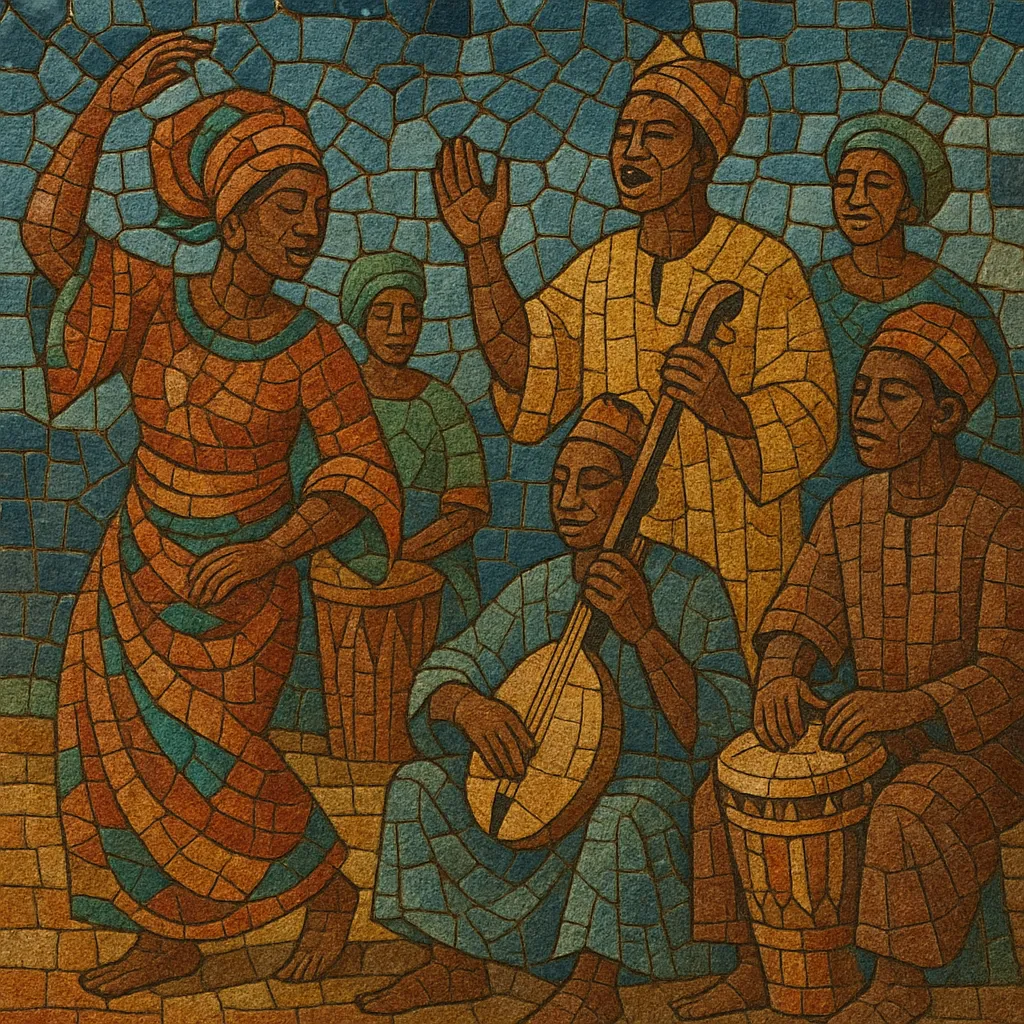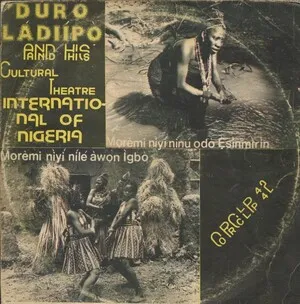Yoruba folk opera (often called Yoruba travelling theatre or Yoruba opera) is a Nigerian performance tradition that fuses sung drama, dance, percussion-driven music, and storytelling drawn from Yoruba folklore, history, and everyday life.
From the outset it blended indigenous praise-poetry, call-and-response choruses, and talking-drum ensembles with hymn-like melodies and guitar-band textures, creating a portable musical-theatrical form that could tour towns, markets, and church halls. Productions typically alternate spoken scenes with choral numbers, dance interludes, moral satire, and mythic pageantry.
Narratives range from retellings of Yoruba legends (such as Òrìṣà epics) to contemporary social commentary, delivered through memorable refrains, vibrant costumes, and participatory audience rapport.
Yoruba folk opera emerged in southwestern Nigeria in the 1940s, when Hubert Ogunde popularized the term “folk opera” for his touring musical-dramas. These shows wove together church-influenced hymnody, Yoruba praise-chant (oríkì), indigenous drumming (dùndún and bàtá), dance, and morality plays. Early troupes performed in makeshift venues and church halls, carrying portable sets and costumes as they toured.
In the postwar years, companies led by Kola Ogunmola, Duro Ladipo, Oyin Adejobi, Akin Ogungbe, and others professionalized the form. Repertoires expanded to include historical epics (e.g., Duro Ladipo’s Oba Kòso about Ṣàngó), satirical social dramas, and folkloric tales. Musically, ensembles combined talking drums, shekere, agogo, and vocals with guitar-band textures shaped by local juju and highlife idioms, while staging incorporated elaborate costumes and choreographed chorus scenes.
As radio, records, and later television grew, folk-opera songs and themes circulated widely. Travelling-theatre troupes began adapting their stage works for broadcast and film, seeding practices that fed directly into Yoruba-language popular cinema and TV serials. The form’s integrated use of chorus, dance breaks, and catchy refrains influenced how Nigerian stage and screen narratives were structured.
While large touring companies became less common, Yoruba folk opera’s aesthetics—sung dialogue, call-and-response choruses, drum-led dance scenes, moral satire, and mythic spectacle—remain foundational to Yoruba theatre and continue to inform stage musicals, cultural festivals, and Yoruba-language screen productions. Its musical grammar also endures in concert pieces and heritage performances that celebrate Yoruba identity.




